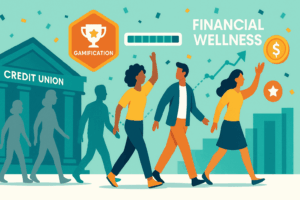Debt 101 Guide
In Ostrich’s Debt 101 Guide you’ll learn how to tackle your bad debt and use good debt towards your financial goals. Debt is a very important tool when it comes to achieving goals we may otherwise struggle to attain, such as buying a house or paying for college. However, it’s important to remember that not all debt is created equal. Thus being intentional when it comes to paying down your balances is a key part of becoming successful financially.
Additionally, sticking to your debt payoff goals isn’t always easy which is why debt challenges are an important tool in your tool belt.
Cost of Debt
The basic premise of borrowing money is that, if I lend you money, I will charge you interest on the amount you have borrowed as a sort of fee. So if I give you $100 and decide I’m going to charge you 2% interest per annum (interest rates are almost always shown on an annual basis), then you’ll owe me $102 at the end of the first year. In general, you are required to pay the interest each month as it accrues until the loan is due.
Interest rates can change pretty dramatically over time, so we won’t quote any here. But following is a breakdown, from least expensive to most expensive, of the cost of different types of debt using mortgage debt as the baseline:
- Mortgage Loan debt (x)
- Government Student Loan debt (1.5x – 2x)
- Private Student Loan debt (2x – 3x)
- Personal Loan debt (2x – 6x)
- Credit Card debt (6x – 9x+)
This can be thought of as a hierarchy of borrowing, in which the “better” debt is a student loan or a mortgage. In contrast credit card debt is by far the worst type of borrowing you can engage in, costing as much as 9x more than a Mortgage in interest.
Now let’s get into the Ostrich’s Debt 101 strategy to becoming debt free!
Step 1: Establish Where You Stand
In order to make a decision on a debt pay down strategy, the first step is to figure out where you are today. Make a note of all your outstanding balances and the interest rates you are paying on a spreadsheet or a piece of paper. Then, organize that list in descending order of interest rate. Maritza the Ostrich is going to play along here too, sharing her different debt levels with us:
- Government Student Loan: $12,700 @ 4.00% APR
- Chase Credit Card: $1,100 @ 21.99% APR
- Mortgage: $148,280 @ 3.65% APR
- American Express Credit Card: $3,241 @ 24.99% APR
- Private Student Loan: $5,350 @ 7.50% APR
So we can see above that Maritza is carrying $170,671 of debt at the moment. The majority of which is her mortgage on her house. Of the remaining $22,391 non-mortgage debt, $18,050 is student loan debt, with $4,341 of credit card debt also outstanding across two different credit cards.
Step 2: Devise Your Strategy
At Ostrich, we are big proponents of the Avalanche debt pay down strategy, in which you put any money you have available to reduce balances towards the highest interest balance first, after you’ve paid the minimums on all your outstanding debt. Another common strategy is the Snowball, where you target your smallest balance first. Psychologically this can make things a little easier, as you see pieces of debt disappearing from your balance sheet, but it will most likely cost you more in interest payments than avalanche.
Maritza is going to tackle her debt using the Avalanche method, targeting her American Express card balance first. Below, you can see her debts now organised by interest rate:
- American Express Credit Card: $3,241 @ 24.99% APR
- Chase Credit Card: $1,100 @ 21.99% APR
- Private Student Loan: $5,350 @ 7.50% APR
- Government Student Loan: $12,700 @ 4.00% APR
- Mortgage: $148,280 @ 3.65% APR
The Avalanche Strategy in Action
We are going to forget about mortgage payments for now, as that is part of Maritza’s housing cost. After she funds that, and her other expenses every month, she has $600 left over to put towards paying down debt.
Her minimums take up $300 of that amount, and she had been putting the other $300 towards her private student loan. Instead, we are going to suggest that she switches that additional $300 to pay down her American Express balance, which is currently charging her 24.99% interest annually.
After paying off her American Express debt, she would then be able to take that extra $300 plus the $65 minimum on the Amex card and put $365/month over and above the minimum towards her Chase card balance.
After paying that down, she would then pay her Private Student Loan, followed by her Government Student Loan.
If Maritza were to use the Snowball method, she would first pay down her Chase credit card, then her American Express. This would cost her more in interest, due to the higher interest rate on the Amex card, but she would be able to pay off the Chase balance more quickly.
Choose your preferred debt 101 pay down strategy and start watching those balances diminish.
Step 3: To Consolidate, or Not To Consolidate?
Debt consolidation can be an easy way to simplify your personal balance sheet, by combining several pieces of debt into one, hopefully lowering the overall interest rate. The decision on whether or not to consolidate your debt is a simple one – either it will cost you less money or it won’t. You can use a simple debt calculator such as this one from NerdWallet to tell you whether your monthly payments will drop, and how much you will save in interest payments. This will depend on what terms you are offered on a refinancing, and therefore is affected by your credit score. Companies such as SoFi are well known for offering debt consolidation loans at fair interest rates.
Step 4: Pay Your Way To Freedom
Once your strategy is established, keep chipping away at those balances until you hit the $0 mark! There are all sorts of issues surrounding carrying debt in the long-term, as detailed here by The Simple Dollar. Once you are debt free, all sorts of options open up for you with all that money that would have been going towards monthly payments – Maritza has $600/month that she had committed to debt pay down which is suddenly available for whatever she wants to use it for. That’s $7,200/year that she could be putting towards retirement, or investing in a business idea she has!
Postscript: Mortgages
Mortgage debt is an interesting one… Mortgage interest rates are routinely lower than the returns you would expect to receive from investing in the stock market. In some instances it makes sense to keep the additional cash you have and use it for investments, rather than rushing to pay down your mortgage. Additionally, mortgages tend to be cheaper than the alternative for living arrangements (renting). Thus paying interest on this balance isn’t going to be crippling in the way that it could be for a credit card. As such, it’s up to you as the borrower to do what you feel comfortable with.
Mortgages shouldn’t be paid down at the expense of saving for retirement, but if your income allows you to save for retirement and still pay down your mortgage, then by all means get after it if it makes you feel more comfortable!
That’s it for Debt 101! Use the ultimate guide to debt challenges to find the best one suited to your needs.
Check out our other guides including Retirement Investing, Short-Term Investing, Giving, and Saving & Budgeting.














